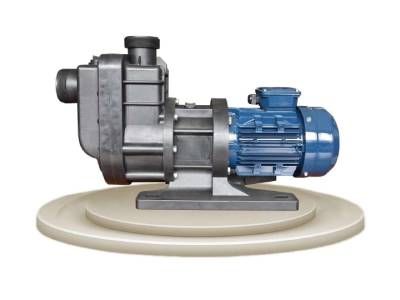Precautions For Installation of Self-Priming Pump
1. Before installing the Self-Priming Pump, a suitable concrete foundation should be made according to the foundation size of the self-priming pump, and the anchor bolts should be embedded in the process of making the concrete foundation. The concrete foundation refers to the large self-priming pump product, and the small self-priming pump does not need to be the concrete foundation.
2. Before installing the self-priming pump, you should carefully check whether the bolts of the self-priming pump are loose and whether there is any foreign matter in the pump body to avoid damage to the impeller when the self-priming pump is running.
3. Put the self-priming pump on the concrete foundation, put a shock isolation pad between the bottom plate and the foundation, and adjust the level of the shock isolation pad to correct the level of the pump, and tighten the bolts after adjustment.

Dry Self-Priming Pump
4. The suction pipe and outlet pipe of the self-priming pump cannot be supported by the pump, but a separate bracket is needed to support the inlet and outlet pipes, and the diameter of the inlet and outlet pipes should be consistent with the diameter of the self-priming pump, especially the inlet pipe. If it becomes larger, it will affect the self-priming height of the self-priming pump. If the inlet pipe of the self-priming pump is reduced during installation, the outlet pipe must also be reduced. We recommend that the corresponding pipe be configured according to the factory standard caliber.
5. When there is a dust cap at the inlet and outlet of the self-priming pump, remove the dust cap and connect it to the pipeline. It should be noted that if you are using the self-priming pump that sucks water the fastest, the outlet pipe must be The turning can only be done after 1 meter vertically upwards, otherwise the water diversion in the pump body will be easily drained during the self-priming process.
6. For the convenience of maintenance and safe use, a regulating valve should be installed on the inlet and outlet pipes of the Dry Self-Priming Pump, and a pressure gauge should be installed between the outlet valve and the pump to ensure that the self-priming pump is at the rated flow and Use within the head range, so as to achieve the normal operation of the self-priming pump and extend the service life of the self-priming pump.
7. Before the self-priming pump is installed and started, you should turn the pump shaft and pour liquid into the pump cavity at the same time, so that the liquid fills the pump cavity to achieve the purpose of exhausting. Check whether the pump is leaking, and the impeller should not be rubbed or stuck. If there is friction or jamming, the pump should be disassembled and the specific reason should be checked to solve it.
If you have more questions, please contact the Self-Priming Pump Manufacturer









